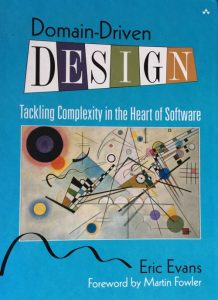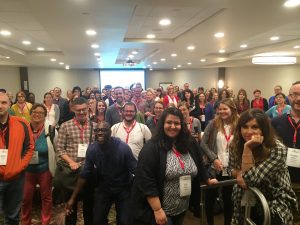 It’s been fun few years, but my content modelling blog post series has come to an end. I started it to amplify what others were saying about structured content, and to make it accessible. When I started, there was gap: everyone knew structured content was important but there weren’t many places to go to show you how to approach it.
It’s been fun few years, but my content modelling blog post series has come to an end. I started it to amplify what others were saying about structured content, and to make it accessible. When I started, there was gap: everyone knew structured content was important but there weren’t many places to go to show you how to approach it.
Content modelling is important. It’s about designing content together, as part of a cross-disciplinary team. Not from the tech up, or from the business down, but as a joined-up, sustainable team across the organisation.
A content model is a communication vehicle. Content modelling is the process to facilitate that communication. Value content modelling over the content model.
As I close out this series, I want to review where we’ve been, what we’ve learned and start to think about what comes next.
Content Modelling Series
Content modelling is such an ugly name for such a useful thing. Just like metadata, people outside the content field don’t like hearing about content modelling. They switch off, roll their eyes and pull out their mobiles to see if anyone’s liked their tweet.
But that hasn’t stopped the rise of content modelling. Over the last few years we’ve been pulling together this series (I say ‘we’ because many have contributed to this single blog). It’s now a resource hub for anyone interested in learning how to approach the design of structured content. It’s no longer at the sidelines of conversations about content: the number of people and organisations doing content modelling has grown.
The content modelling series and the full list of events
Content Modelling Workshops
In 2011 I met Rachel Lovinger. We decided to get together and run workshops on Content Modelling. Rachel helped shape the workshop and ensured it appealed to content strategists. When Kate Kenyon joined our company Cognifide to head up content, we added personalisation.
Our workshops sizes seem to be growing 20-30% year on year. Even with the geeky name, they are well attended with folks from social media (Facebook, Google, Twitter, …), Agencies (Accenture, Razorfish, Sapient, …) and large organisations (Bayer, Sabre, Marriott, Amazon, …). This is great.
There are also many different types of content modellers approaching the discipline from different angles. Mike Atherton, Jeff Eaton, Joe Gollner, Noz Urbina, and Rahel Bailie to name a few. This is where I go to learn, and I recommend you do the same.
From Mechanics to Application
The focus of my content modelling series has been on the mechanics of content modelling. What is a content model? How do you approach content modelling? What design tips and hints can I share? By the end of the series, I hope you’ll be able to answer those questions. I’ve noticed that things have moved on since I started this series. Five years ago, people were asking, how do we get started? That’s no longer the question they need answering: now, practitioners are landing at our workshops with content models asking how best to apply them.
Folks have graduated from the content modelling 101 class. They want more. So Cleve, I’ve got this rather basic content model, now what? I say, make it a better communication tool. How? Make it richer by strengthening the relationships and their meaning? Why? Because then you can start applying content models to:
- Architect content APIs.
- Inform Personalisation.
- Design authoring interfaces.
- Align multi-disciplinary teams.
- Do UX for consumer experiences.
- Define and enforce content rules.
- Shape taxonomy and metadata needs.
- Document the shape, size and scope of content.
- And so on…
The Next Step? Onwards to Domain Modelling
 As you can see, there is so much more to do. Although the content modelling series is complete, it only conveys the mechanics. The focus must shift towards the application of content models to drive business impact.
As you can see, there is so much more to do. Although the content modelling series is complete, it only conveys the mechanics. The focus must shift towards the application of content models to drive business impact.
We need more that just a content model to have business impact. A model just shows how content types relate to each other. To have impact, we to show how those content types interact with the wider business domain. And for that we need a domain model.
A domain model is the business view of world. It expresses the essential complexities of the business domain as a series of structures and meaningful relationships, jus like a content model does for content. Technologists use them to perform object-oriented design, and I’m seeing more folks using them with content modelling (or content design). Again, look to Jeff Eaton and Mike Atherton for more.
Why am I telling you this? Because I think making content modelling a key business activity is about to become our next big challenge. If you want a better grounding in this and you’re more technically minded, read the book Domain-Driven Design. Back in 2009, I invited Eric Evans to our offices in Poland to guest lecture on the subject of domain modelling at our local university. He changed the way we thought about software and content in the space of an hour.
I don’t have all the answers yet, but I have a feeling we’ll be hearing more about domain modelling and its relationship to content going forwards.
Summary
That’s a wrap. This is just a big thank you to everyone that got out of bed, travelled, and paid to attend our workshops. The feedback and emails have been really constructive and helped improved the content modelling series. It’s made it all worthwhile. So thank you.




Congrats, Cleve! Great stuff and thanks for the shout out. I’m always amazed how our community moves through ideas together as if were a hive mind even though we don’t always get a chance to actually talk as much as we should. I want to throw a vote against Domain modelling as well. I’m using a domain model as an output of customer journey mapping, which then branches out to feed a taxonomy (or Ontology) and content model. BUT, it’s the domain model that is the really powerful communication and sharing piece that helps the content teams discuss their world-view with the business itself. And Domain Driven Design is awesome. I wish there was a less technical book I could recommend on the topic because it’s so important for our field. 2017 and beyond is going to be brilliant for this area of content strategy!
Thanks Noz. Totally agree with you on the domain modelling front. When I first read your comment, I thought your vote was against, that is not for, domain modelling. But after a quick double check, and realising it was you :), all was right with the world again.
Some kind sole out there is going to find the time to simplify domain modelling and put forward an approach for the masses. Any takers???
Pingback: Content modeling revisited - Cleve Gibbon